15 Ng. 100 Đ. Nguyễn Xiển, Thanh Xuân Nam, Thanh Xuân, Hà Nội 100000
Step away from the well-trodden tourist paths of Bali and the bustling energy of Jakarta, and you'll discover a city in Central Java that embodies the very soul of Javanese culture. Solo (Surakarta), often overshadowed by its more famous neighbor Yogyakarta, is a captivating royal city where tradition isn't just preserved – it's woven into the fabric of daily life. Here, the gentle gamelan melodies echo through palace walls, intricate batik patterns tell ancient stories, and the refined court culture of the past gracefully coexists with modern life.
Solo is a treasure trove for those seeking an authentic and immersive cultural experience. It's a place where you can witness ancient rituals, learn traditional crafts, savor the sweet and savory delights of Javanese cuisine, and explore the grandeur of royal palaces that still serve as living institutions. Unlike some faster-paced destinations, Solo invites you to slow down, absorb its gentle rhythm, and truly connect with the heart of Javanese heritage.
This comprehensive guide will lead you through the enchanting world of Solo, exploring its rich royal history, its vibrant artistic traditions, its delectable culinary scene, and its serene charm. Whether you're a history buff, an art enthusiast, a foodie, or simply a curious traveler looking to delve deeper into Indonesia's cultural richness, prepare to be charmed by the enduring elegance of Solo.
Solo, officially known as Surakarta, holds a significant place in Javanese history as one of the two surviving royal cities (the other being Yogyakarta). Its identity is inextricably linked to the Mataram Sultanate, a powerful kingdom that once dominated Java.
The history of Solo as a distinct royal city began in the mid-18th century. Following internal conflicts and Dutch intervention, the Mataram Sultanate was eventually divided. In 1755, the Treaty of Giyanti formally split the kingdom, leading to the establishment of the Surakarta Hadiningrat Sultanate (Kasunanan Surakarta) in Solo and the Yogyakarta Sultanate. A later split in 1757 further carved out the Mangkunegaran Duchy (Kadipaten Mangkunegaran) within Solo itself, creating two distinct royal houses in one city.
This dual monarchy has profoundly shaped Solo's character, fostering a unique rivalry and collaboration that has fueled its artistic and cultural development. To this day, both the Kasunanan Palace and the Mangkunegaran Palace remain important cultural centers, serving as custodians of Javanese traditions, arts, and ceremonies.
Solo is celebrated for its highly refined and conservative court culture, known as "Keraton culture." This culture emphasizes elegance, subtlety, and adherence to ancient customs.
Batik: Solo is one of the epicenters of Javanese batik. Its batik styles are distinct, often featuring classic brown, indigo, and white color palettes, and intricate, symbolic motifs that reflect court aesthetics.
Gamelan: The traditional Javanese percussion orchestra, producing mesmerizing, layered melodies. Gamelan music is integral to court ceremonies, wayang performances, and traditional dances.
Wayang Kulit & Wayang Orang: Shadow puppet (Wayang Kulit) and human (Wayang Orang) theatrical performances, often based on Hindu epics like the Ramayana and Mahabharata, are highly esteemed art forms that convey moral lessons and Javanese philosophy.
Traditional Dance: Solo is renowned for its classical Javanese court dances, characterized by graceful, slow movements that convey deep emotion and symbolism.
Etiquette (Krama): Javanese culture places a strong emphasis on politeness, respect, and hierarchy, reflected in their language (levels of Javanese speech) and social interactions.
The enduring royal presence in Solo is most vividly experienced through its magnificent palaces, each telling its own story of power, art, and tradition.
The official palace of the Kasunanan Surakarta Sultanate, this grand complex is the spiritual and cultural heart of Solo. While parts of it are still the private residence of the current Pakubuwono (the reigning monarch), significant sections are open to the public.
Architecture: The palace showcases classic Javanese architectural style, with large courtyards, majestic pavilions (pendopo), and intricate wooden carvings. The main pavilions are often used for traditional ceremonies and performances.
Museum (Museum Keraton): Within the palace grounds, a museum displays a collection of royal artifacts, including ceremonial objects, traditional weapons (kris), antique furniture, and gifts from various nations, offering a glimpse into the opulent life of the Javanese royalty.
Alun-alun Kidul & Lor (South and North Squares): These large, open fields adjacent to the palace were historically central to court life, used for ceremonies, markets, and public gatherings. Alun-alun Kidul, particularly, is famous for its night market feel and unique "Malam Suro" tradition where people walk blindfolded around a banyan tree.
The palace of the Mangkunegaran Duchy, a principality within Surakarta, is often considered more accessible and exquisitely preserved for visitors.
Pendopo Ageng: The most striking feature is its enormous, open-sided main pavilion, one of the largest and most beautiful in Java, adorned with intricate gold and red details. It serves as a venue for classical Javanese dance, gamelan performances, and traditional ceremonies.
Museum Pura Mangkunegaran: The palace museum houses an impressive collection of royal heirlooms, including ancient weaponry, jewelry, traditional costumes, gamelan instruments, and beautifully preserved furniture. The guided tour here is highly recommended as it provides invaluable insights into the history and customs of the Mangkunegaran family.
Library (Rekso Pustoko): One of the oldest and most extensive libraries in Java, containing rare Javanese manuscripts and historical documents.
Lokananta National Recording Studio: While not within the palace, Solo is also home to Lokananta, Indonesia's first national recording studio, famous for preserving historical recordings of traditional Indonesian music, including gamelan and kroncong. A must-visit for music enthusiasts.
A historic park that was once a royal recreational ground, Taman Sriwedari now serves as a public space and cultural center. It's famous for:
Wayang Orang Sriwedari: The oldest professional Wayang Orang (human puppet) troupe in Indonesia, performing daily shows (except Sundays) that bring the epic stories of the Ramayana and Mahabharata to life through elaborate costumes, dance, and music. It's a truly mesmerizing experience.
Night Market: The park also hosts a popular night market with food stalls and local entertainment.
Solo is a haven for art and craft enthusiasts, particularly renowned for its exquisite batik.
Solo's batik is celebrated for its unique style, distinct from that of Yogyakarta, often characterized by its classical brown (sogan) and indigo colors, and intricate patterns.
Batik Laweyan: One of Solo's oldest and most famous batik villages. Here, you can wander through narrow alleys lined with traditional batik workshops and shops, many of which have been passed down through generations. You can observe the batik-making process, from drawing the patterns with wax (canting) to dyeing and boiling. It's a great place to purchase high-quality batik fabric, clothing, and souvenirs directly from the producers.
Kampung Batik Kauman: Another historic batik village, slightly closer to the city center, offering similar opportunities to learn about and buy batik.
Batik Workshops: Many workshops in both Laweyan and Kauman offer short courses or demonstrations, allowing you to try your hand at creating your own batik masterpiece.
Beyond batik, Solo offers other traditional crafts:
Keris (Traditional Dagger): The ceremonial dagger, considered a spiritual object in Javanese culture, is often beautifully crafted with intricate hilts and blades. You can find shops specializing in kris or even witness blacksmiths at work.
Gamelan Instrument Making: Some workshops still produce the elaborate bronze and wooden instruments that make up a gamelan orchestra.
Wayang Kulit & Wayang Golek Puppets: Find beautifully crafted traditional puppets, either for performance or as decorative pieces.
Solo's commitment to preserving its performing arts is evident in its various venues and schools.
Dance & Music Schools: Solo is home to numerous traditional dance and gamelan schools, ensuring that these ancient art forms continue to thrive and evolve.
Local Performances: Beyond Wayang Orang Sriwedari, keep an eye out for local performances of traditional dances, gamelan concerts, or contemporary interpretations of Javanese arts in various cultural centers or public spaces.
Solo is a foodie's paradise, famous for its distinct Javanese cuisine, which tends to be sweeter than the spicier dishes found in other parts of Indonesia. However, it also boasts a fantastic array of savory delights.
Nasi Liwet: Solo's signature dish, a fragrant rice cooked in coconut milk, chicken broth, and spices, served with shredded chicken (suwiran ayam), hard-boiled egg, and a rich, savory coconut gravy (areh). It's typically served for breakfast or dinner from street-side stalls.
Sate Buntel: A unique Solo specialty! Minced lamb or goat meat, mixed with spices, wrapped around a bamboo stick (buntel means "wrap"), and then grilled. It's incredibly flavorful and juicy.
Timlo Solo: A clear, light, and refreshing soup, usually with chicken (sometimes beef), mushrooms, sausages, and a hard-boiled egg, often served with clear noodles. Perfect for a warm day.
Serabi Solo: A traditional Solo pancake made from rice flour and coconut milk, cooked over charcoal. It's softer and spongier than pancakes from other regions, often served with sweet toppings like chocolate or banana, or plain.
Tengkleng: A hearty and rich goat soup, made from goat ribs and bones, cooked in a flavorful broth with turmeric, ginger, and other spices. A very popular dish among locals.
Cabuk Rambak: A unique traditional snack. It consists of ketupat (rice cake) slices covered with a peanut sauce and served with rambak (buffalo skin crackers).
Dawet Ayu Solo: A refreshing dessert drink made from coconut milk, liquid palm sugar, and small, green rice flour jelly droplets (cendol).
Intip Solo: Crispy rice crackers, often flavored with sweet or savory toppings.
Gladag Langen Bogan (Galabo): A vibrant night culinary center located near Pasar Klewer, offering a wide array of Solo's street food specialties in one convenient location.
Pasar Gede Hardjonagoro: Solo's main traditional market, bustling with activity, especially in the mornings. You can find fresh produce, spices, and various local snacks and traditional Javanese cakes. Many legendary food stalls are located within or around the market.
Local Warungs: Solo is dotted with countless small, family-run warungs (eateries) serving authentic and affordable Javanese dishes. Don't be afraid to venture into these local spots for a true taste of Solo.
Cafes and Modern Restaurants: While Solo excels in traditional cuisine, it also has a growing number of modern cafes and restaurants, especially in areas frequented by younger generations.
Beyond its royal heritage, Solo offers a range of other attractions that highlight its local life, arts, and history.
Pasar Klewer: One of Central Java's largest and most famous batik markets. It's a labyrinthine covered market where you can find an astonishing variety of batik fabrics, clothing, and handicrafts at wholesale and retail prices. Prepare to bargain!
Pasar Triwindu (Antique Market): A fascinating market for antique lovers, selling everything from old coins and traditional weapons to vintage furniture, handicrafts, and unique curios. It's a great place to hunt for unique souvenirs and historical artifacts.
Museum Pers Nasional (National Press Museum): For those interested in Indonesian history and journalism, this museum showcases the history of Indonesian press, from colonial times to the present, with a collection of old newspapers, printing equipment, and historical documents.
Dayu Park: A recreational park with a swimming pool and a small museum showcasing some archaeological finds and traditional Javanese elements.
Taman Balekambang: A historical park that was once a royal recreational area. It's now a public park with beautiful gardens, a pond for boating, and often hosts cultural events and performances.
Sriwedari Park: (mentioned earlier for Wayang Orang) also offers pleasant green spaces for relaxation.
Solo's strategic location in Central Java makes it an ideal base for exploring some of Indonesia's most iconic archaeological and natural sites.
Just about an hour's drive west of Solo (closer to Yogyakarta, but easily accessible), Prambanan is the largest Hindu temple complex in Indonesia and a UNESCO World Heritage site.
Magnificent Architecture: Dedicated to the Trimurti (Brahma, Vishnu, Shiva), the towering and intricately carved temples are a stunning example of 9th-century Hindu architecture.
Ramayana Ballet: In the evenings, especially during full moon, you can witness the spectacular Ramayana Ballet performance with Prambanan Temple as a magnificent backdrop, either on an open-air stage or an indoor theater.
For a more off-the-beaten-path temple experience, venture east to the slopes of Mount Lawu (around 1.5-2 hours drive).
Candi Sukuh: A unique and somewhat controversial 15th-century Hindu temple, known for its distinctive pyramid-like structure (reminiscent of Mayan temples) and explicit relief carvings, which are unusual for Javanese temples. It offers a glimpse into later Javanese Hinduism and fertility cults.
Candi Ceto: A picturesque 15th-century Hindu-Javanese temple dedicated to the goddess Saraswati, located higher up the slopes of Mount Lawu. Its terraced structure and serene setting offer breathtaking panoramic views of the surrounding tea plantations and valleys.
Located near Candi Sukuh and Ceto, Grojogan Sewu is a beautiful multi-tiered waterfall cascading down the slopes of Mount Lawu. It's a popular recreational spot, often combined with a visit to the nearby temples.
An active stratovolcano, Mount Lawu, is a sacred mountain in Javanese belief. It offers challenging but rewarding treks, popular among pilgrims and hikers.
A UNESCO World Heritage site (about 1.5 hours drive north of Solo), Sangiran is one of the most important sites in the world for the study of human evolution. It has yielded a wealth of hominid fossils, including Homo erectus (Java Man), along with various animal fossils and stone tools. The museum at Sangiran provides excellent exhibits to understand this fascinating paleontological history.
While Solo is generally easy to navigate, having expert guidance can significantly enhance your experience, especially when delving into its nuanced royal culture, exploring its intricate batik villages, or planning day trips to its surrounding wonders. This is where Golden Trail Travel becomes your invaluable partner for a truly enriching Central Java adventure.
Golden Trail Travel specializes in crafting immersive and authentic travel experiences throughout Indonesia, with a particular expertise in cultural and historical journeys in Java. They understand the intricacies of Solo's traditions, ensuring you gain a deeper appreciation of its heritage and smoothly navigate its attractions.
Golden Trail Travel offers comprehensive services that include:
Customized Cultural Tours: From half-day palace and batik village tours to multi-day itineraries that combine Solo's highlights with day trips to Prambanan, Mount Lawu temples, or Sangiran, they can tailor a trip to your interests, pace, and budget.
Experienced Local Guides: Benefit from the insights of professional, English-speaking guides who are deeply knowledgeable about Javanese history, culture, and local etiquette. They can provide context, answer your questions, and facilitate meaningful interactions.
Seamless Transportation: Enjoy comfortable and efficient travel around Solo and to its surrounding attractions with their well-maintained vehicles and experienced drivers, ensuring a hassle-free journey.
Authentic Experiences: They can arrange unique experiences like batik workshops, traditional cooking classes, or attendance at local cultural performances, allowing for deeper immersion.
Accommodation Arrangements: They can assist with securing suitable accommodation options, from charming boutique hotels to traditional Javanese-style guesthouses that enhance your cultural experience.
Hassle-Free Booking: Their user-friendly website allows you to easily browse, select, and book your desired tours and activities, providing peace of mind before you even arrive.
Don't miss the chance to uncover the gentle beauty and profound culture of Solo. Let Golden Trail Travel handle the complexities, allowing you to immerse yourself fully in the enduring elegance of Central Java's royal gem.
Visit their website to explore their diverse range of Solo and Central Java tours and easily book your captivating cultural adventure: https://goldentrailtravel.com/
Solo offers a range of accommodation options, from international hotel chains to charming boutique hotels and traditional guesthouses, catering to various budgets and preferences.
Boutique & Heritage Hotels: Solo is known for its beautiful boutique hotels that often incorporate traditional Javanese architecture and decor, offering a unique and immersive stay.
International Chains: Several international hotel brands offer modern amenities and services, usually located in central areas.
Guesthouses (Homestays): For a more authentic and budget-friendly experience, numerous guesthouses provide basic comforts and a chance to interact with local families.
Hotels near the Palaces: Staying closer to the Keraton or Mangkunegaran Palace can enhance your cultural experience and provide easy access to historical sites.
It's advisable to book your accommodation in advance, especially during peak seasons or local festivals. Many tours with Golden Trail Travel can include or assist with accommodation arrangements.
The best time to visit Solo is during the dry season, from May to September.
Dry Season (May - September): This period offers consistently sunny days, lower humidity, and minimal rainfall, making it ideal for exploring outdoor attractions, cultural sites, and day trips. Temperatures are generally warm but pleasant.
Shoulder Seasons (April & October): These months can also be good, with fewer tourists and generally pleasant weather, though there might be occasional showers.
Wet Season (November - March): Expect higher rainfall, often in short, heavy bursts. While travel is still possible, some outdoor activities might be affected, and temperatures remain warm and humid.
Solo's cultural attractions can be enjoyed year-round, but the dry season provides the most comfortable conditions for sightseeing.
Transportation within Solo: Solo is generally more walkable and less congested than Jakarta. For getting around, Becak (pedicabs) offer a charming way for shorter distances (bargain before you ride). Gojek and Grab (ride-hailing apps) are widely available for motorbikes and cars, offering convenient and affordable transport. Taxis are also available.
Language: Bahasa Indonesia is the official language. While English is spoken in hotels and major tourist spots, learning a few basic Indonesian or Javanese phrases (e.g., "Matur Nuwun" - thank you in Javanese) will enhance your experience and interactions with locals.
Currency: Indonesian Rupiah (IDR). ATMs are widely available in the city center.
Bargaining: In traditional markets like Pasar Klewer and Pasar Triwindu, bargaining is expected and part of the fun. Start by offering about half the asking price and negotiate politely.
Dress Code: While generally relaxed, dress modestly, especially when visiting palaces, temples, or mosques. Shoulders and knees should be covered.
Food Safety: Be adventurous with Solo's street food, but choose stalls that look clean and have a high turnover of customers.
Stay Hydrated: The tropical climate can be hot. Drink plenty of bottled water.
Respect & Etiquette: Javanese culture emphasizes politeness and respect. Use your right hand for giving and receiving, and avoid pointing with your feet. When visiting royal palaces, observe quiet reverence.
Golden Trail Travel: For a seamless and enriching cultural journey, consider booking your Solo tours and transfers with Golden Trail Travel (https://goldentrailtravel.com/). Their local expertise is invaluable for unlocking Solo's hidden gems.
"Solo was an absolute revelation! We spent three days here after visiting Yogyakarta, and it felt like a deeper dive into Javanese culture. The Mangkunegaran Palace tour was captivating, and we spent hours at Batik Laweyan. Golden Trail Travel arranged our transfer from Yogyakarta and a fantastic Solo city tour. Our guide was incredibly knowledgeable and passionate about Javanese heritage. Highly recommend them for an authentic experience!" — Sarah W., UK
"If you want to truly experience traditional Javanese life, Solo is the place. We loved trying Nasi Liwet from a street vendor and watching the Wayang Orang performance at Sriwedari. For our day trip to Candi Sukuh and Candi Ceto, we used Golden Trail Travel. Their driver was excellent, and the itinerary was perfect. It was seamless and stress-free, allowing us to focus on the stunning temples and views." — Liam C., Australia
"Solo exceeded all our expectations! The warmth of the people, the beauty of the batik, and the delicious food were highlights. We used Golden Trail Travel for a tailor-made cultural tour that included a batik workshop, which was so much fun. Their professionalism and deep understanding of local culture really impressed us. Don't miss this hidden gem of Java, and book with Golden Trail Travel!" — Emily R., Canada
"As a history buff, Solo was fascinating. The Keraton and Mangkunegaran palaces offer such a rich insight into the royal past. We also visited Lokananta, which was incredible for music lovers. Golden Trail Travel provided a knowledgeable guide who enhanced our understanding of every site. Their service made our exploration of Solo so much more enriching. Great website for booking tours too!" — David P., USA
"My trip to Central Java was made perfect by the addition of Solo. It’s so much more authentic and less touristy than other cities. The food was divine, especially the Sate Buntel! We booked all our transfers and a combined tour to Prambanan from Solo with Golden Trail Travel. Everything was punctual, comfortable, and well-organized. Their attention to detail really stood out." — Priya S., India
Q1: What is Solo (Surakarta) famous for? A1: Solo is famous as one of the two surviving royal cities in Java (alongside Yogyakarta), known for its highly refined Javanese court culture (Keraton culture), exquisite batik, traditional performing arts (gamelan, wayang, classical dance), and unique local cuisine. It offers a deeper, more authentic cultural immersion.
Q2: How is Solo different from Yogyakarta? A2: While both are royal Javanese cities, Solo is often considered more traditional, conservative, and less touristy than Yogyakarta. Solo's court culture (Kasunanan and Mangkunegaran) has distinct characteristics in batik motifs, dance styles, and culinary preferences (Solo food tends to be sweeter). Solo offers a more intimate glimpse into Javanese royal life.
Q3: What are the must-visit attractions in Solo? A3: Key attractions include Keraton Surakarta Hadiningrat (Solo Palace), Pura Mangkunegaran (Mangkunegaran Palace), Batik Laweyan and Kampung Batik Kauman (for batik shopping and workshops), Pasar Klewer (batik market), Pasar Triwindu (antique market), Taman Sriwedari (for Wayang Orang performances), and culinary explorations.
Q4: What local food should I try in Solo? A4: You must try Solo's signature dishes: Nasi Liwet, Sate Buntel, Timlo Solo, Serabi Solo, Tengkleng, and Cabuk Rambak. Solo's food tends to be sweeter than other Javanese regions.
Q5: How do I get to Solo? A5: Solo has its own international airport (Adisumarmo International Airport - SOC) with domestic and some regional flights. It's also well-connected by train from major cities like Jakarta and Yogyakarta. Many travelers also arrive by car/bus from Yogyakarta (approx. 1-hour drive).
Q6: Can I take day trips from Solo? A6: Yes, Solo is an excellent base for day trips. Popular destinations include Prambanan Temple complex (Hindu temple), Candi Sukuh and Candi Ceto (mystical temples on Mount Lawu), Tawangmangu Waterfall, and Sangiran Early Man Site (UNESCO World Heritage).
Q7: Is it safe to travel in Solo? A7: Solo is generally very safe for tourists. Like any city, exercise common sense precautions regarding personal belongings. The local people are known for their hospitality and gentle nature.
Q8: Can I learn batik in Solo? A8: Yes! Solo is one of the best places to learn about batik. Many workshops in Batik Laweyan and Kampung Batik Kauman offer short courses or demonstrations where you can try your hand at making your own batik.
Q9: What is the best way to get around Solo? A9: For shorter distances, you can enjoy walking, taking a becak (pedicab – negotiate price), or using Gojek/Grab motorbike taxis. For longer distances or day trips, Gojek/Grab cars or hiring a private car with a driver (which Golden Trail Travel can arrange) are convenient options.
Q10: How can Golden Trail Travel enhance my Solo trip? A10: Golden Trail Travel specializes in crafting authentic cultural tours in Solo and Central Java. They can arrange tailored itineraries that include palace visits, batik workshops, culinary tours, and day trips to surrounding temples or natural sites. They provide experienced local guides, comfortable transportation, and seamless booking through their website (https://goldentrailtravel.com/), ensuring a rich and hassle-free experience.
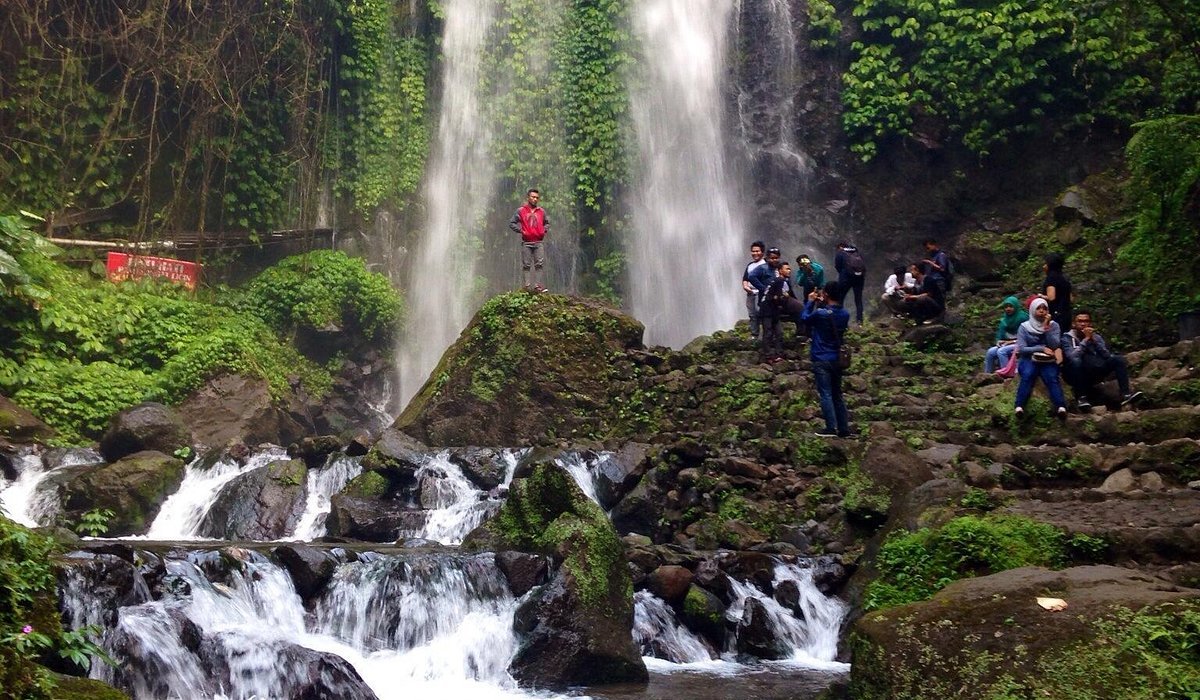
.jpg)
That era is over. The rise of the electric bicycle has fundamentally redefined travel here. E-Bike Vietnam Cycling Holidays offer a revolutionary path, making the country’s most challenging and breathtaking routes, such as the legendary Ha Giang Loop and the Ho Chi Minh Trail, fully accessible to riders of all fitness levels. The E-Bike transforms the journey from a feat of pure endurance into an immersive cultural and scenic delight, allowing you to achieve a profound feeling of conquest while channeling your energy into savoring the profound closeness to nature and the genuine warmth of the local communities.
October 06, 2025
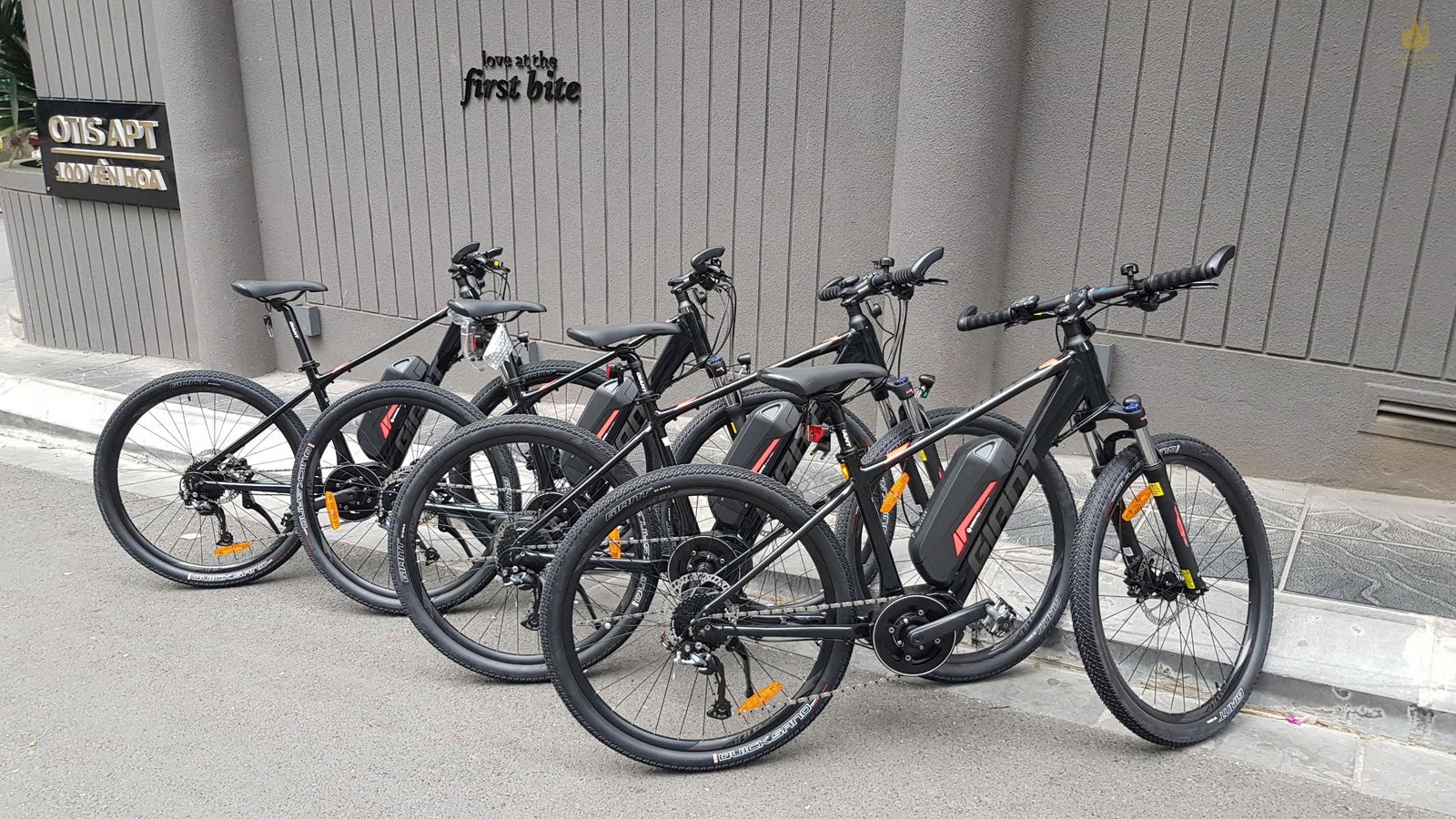
Vietnam, a country famed for its spectacular mountain passes, lush rice terraces, and complex network of historic trails, has long been a dream destination for cyclists. Yet, its challenging geography—characterized by scorching heat, punishing humidity, and immense vertical climbs—often reserves the most breathtaking routes for only the fittest elite. This barrier has now been shattered. The advent of E-Bikes Cycling Vietnam has democratized the adventure, making the country’s most remote and beautiful landscapes accessible to riders of all ages and fitness levels.
October 06, 2025
.jpg)
For the dedicated gravel cyclist, Southeast Asia represents the pinnacle of mixed-terrain exploration. While individual countries offer stunning challenges, the true masterpiece lies in combining them. The cross-border adventure spanning Gravel bike riding in Vietnam and Laos is an unparalleled journey, seamlessly blending the soaring karst mountains of Northern Vietnam with the quiet, forested plateaus and historical trails of Laos.
October 06, 2025
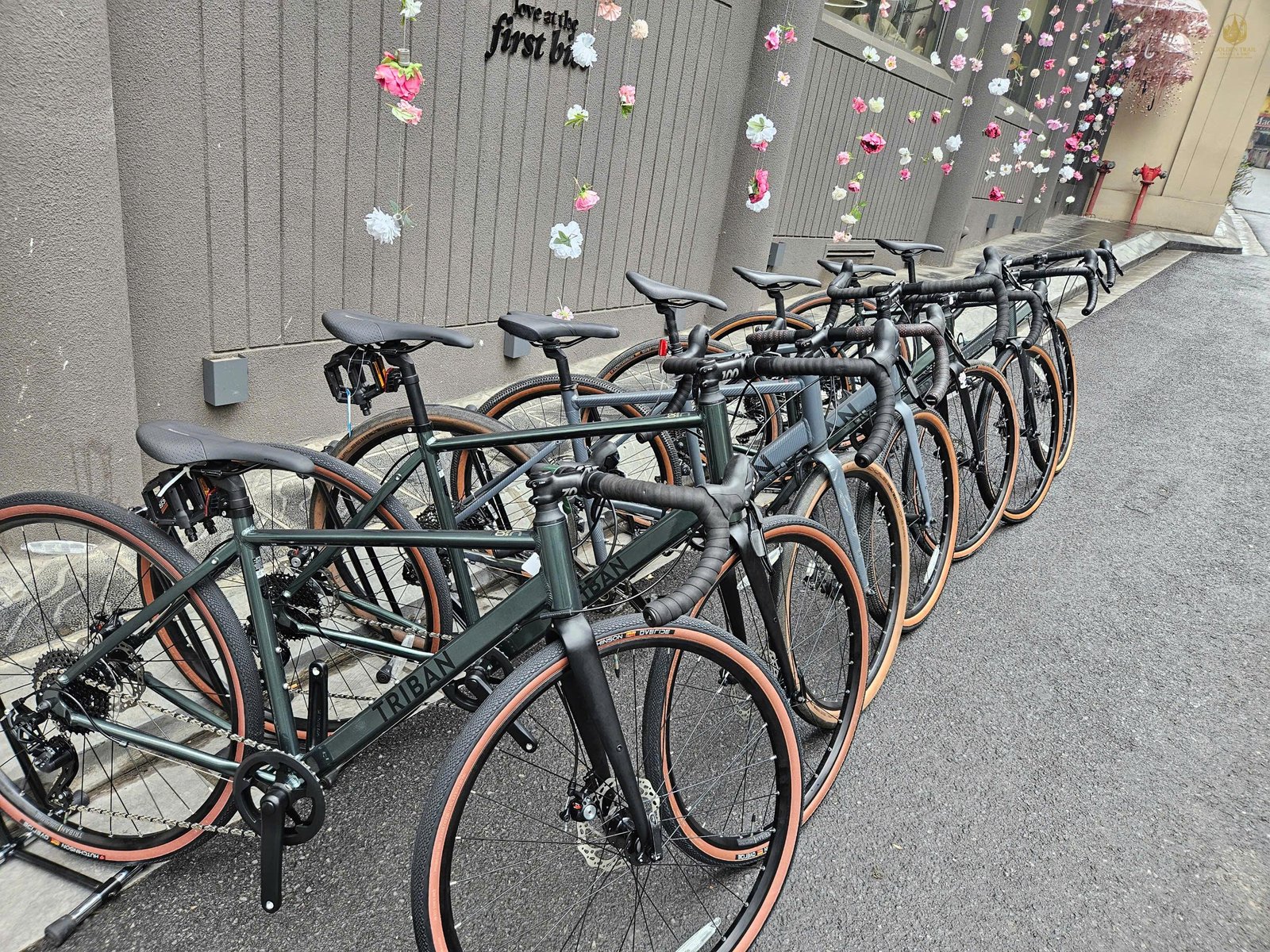
The Ho Chi Minh Trail (HCT)—Đường Trường Sơn in Vietnamese—is more than just a route; it is a legendary tapestry woven from history, endurance, and raw, untamed landscape. While many know the HCT as a symbol of wartime resilience, today it represents the ultimate pilgrimage for the modern adventurer. Forget crowded highways and tourist buses
October 06, 2025

Vietnam is not merely a destination; it is an epic, sensory overload, a land waiting to be discovered inch by inch. While motorbike journeys and bus tours follow the predictable highways, the true soul of this nation—its quiet valleys, timeless hamlets, and untamed mountains—is revealed only to those who dare to take the dirt road.
October 06, 2025

What to Bring on a Vietnam Bike Ride? It is important that the clothing you take on your cycling tour is appropriate for the trip you have chosen. There is a fine balance between taking too much and too little, especially considering that you need to equip yourself for differing levels of physical exertion and also for a range of climatic conditions.
September 09, 2025
.jpg)
Discover the magic of a Vietnam cycling holiday. Explore breathtaking landscapes, immerse yourself in local culture, and embark on an unforgettable adventure through mountains, coastlines, and deltas. Book your dream cycling trip today.
September 05, 2025
.jpg)
Embark on an unforgettable bicycle tour in Vietnam. Explore breathtaking landscapes, immerse yourself in local culture, and experience the ultimate cycling adventure through mountains, coastlines, and deltas. Book your dream bike trip today.
September 05, 2025
.jpg)
Embark on an unforgettable bike tour in Vietnam. Explore breathtaking landscapes, immerse yourself in local culture, and experience the ultimate cycling adventure through mountains, coastlines, and deltas. Book your dream bike trip today.
September 05, 2025
.jpg)
Discover the magic of a Vietnam cycling tour. Explore breathtaking landscapes, immerse yourself in local culture, and embark on an unforgettable adventure through mountains, coastlines, and deltas. Book your dream cycling trip today.
September 05, 2025
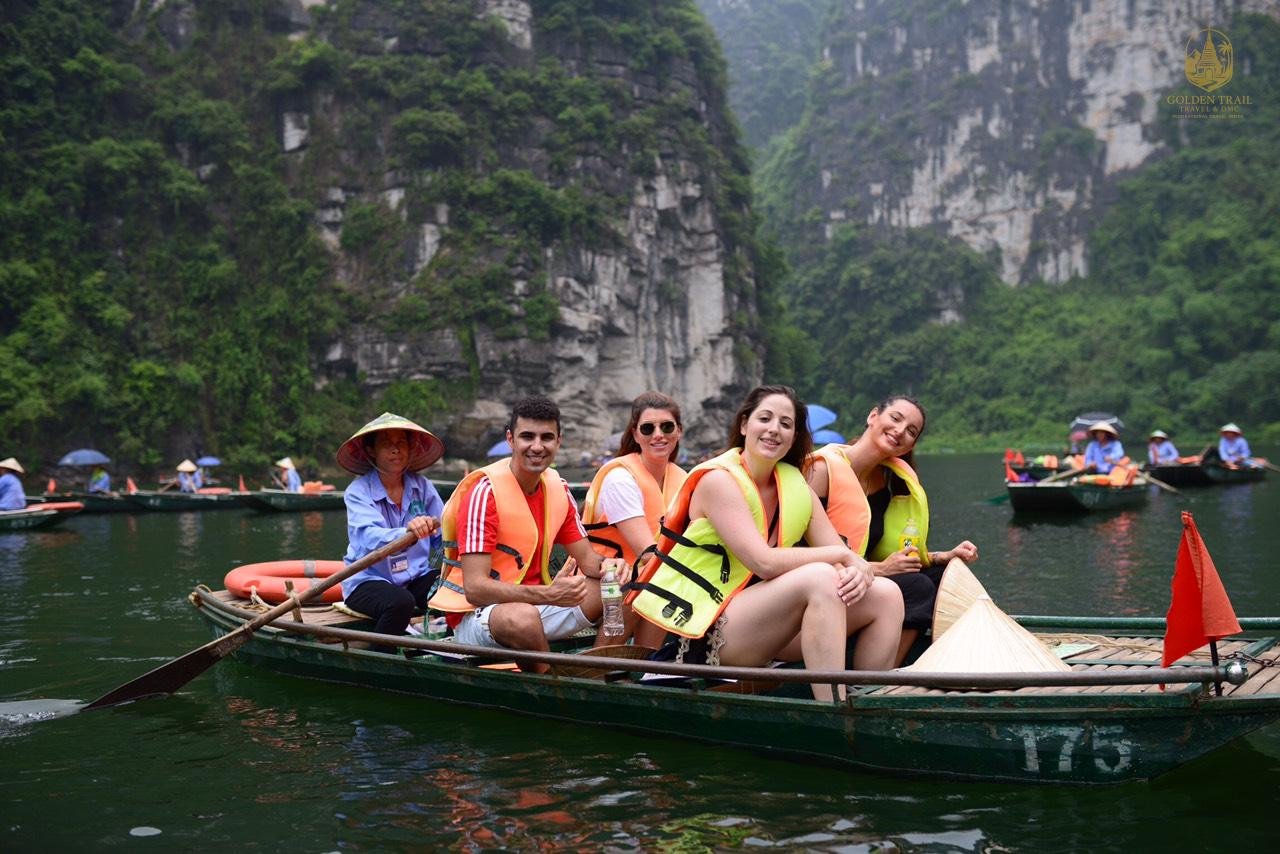
Embark on a serene Ninh Binh boat tour and discover the "Halong Bay on land." Glide through mystical caves and stunning limestone karsts in Tam Coc, Trang An, and Van Long. Book your unforgettable journey with Golden Trail Travel & DMC
August 29, 2025
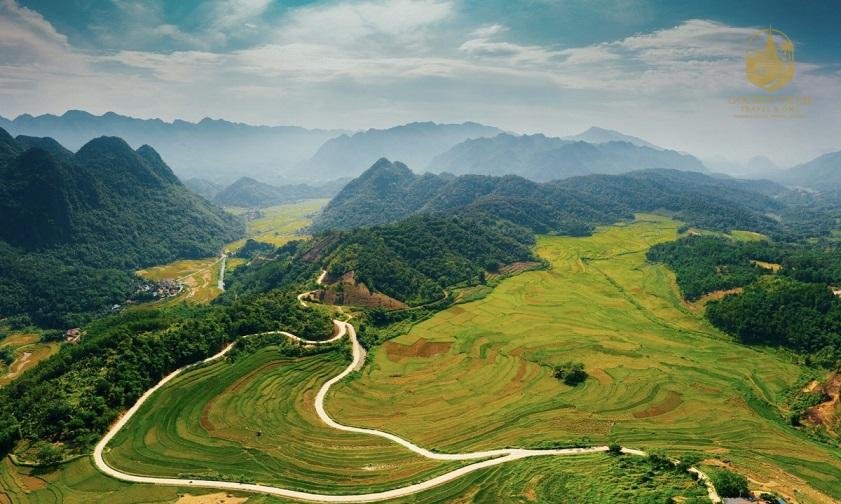
Discover the serene beauty of Pu Luong valley. Trek through lush terraced fields, experience authentic local life, and witness breathtaking landscapes. Book your Pu Luong tour with Golden Trail Travel & DMC.
August 29, 2025
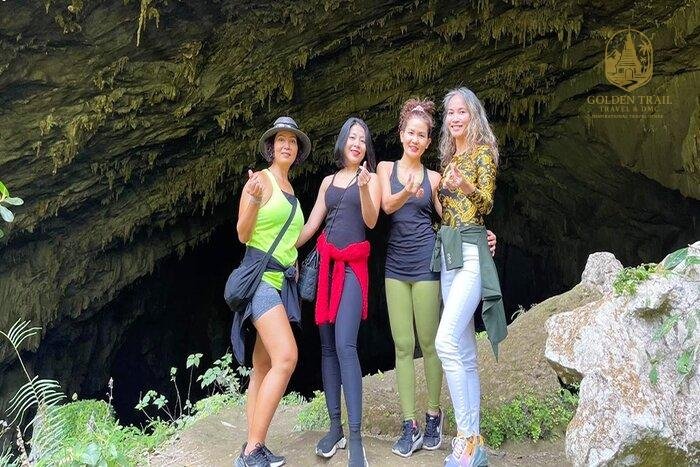
Journey into the heart of Pu Luong to Kho Muong Cave. Trek through stunning landscapes, explore a magnificent bat cave, and experience an authentic adventure. Book your tour with Golden Trail Travel & DMC.
August 29, 2025
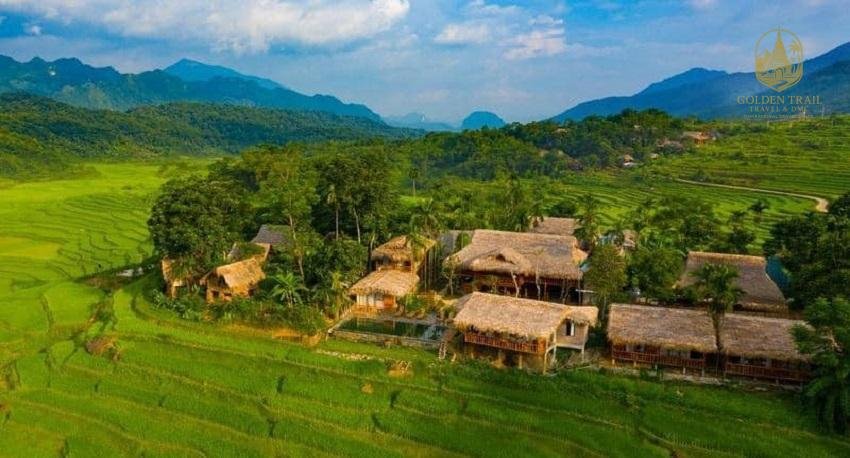
Discover the breathtaking views and authentic culture of Don village in Pu Luong. Trek to its magnificent viewpoints, experience local life, and witness stunning sunrises and sunsets. Book your tour with Golden Trail Travel & DMC.
August 29, 2025
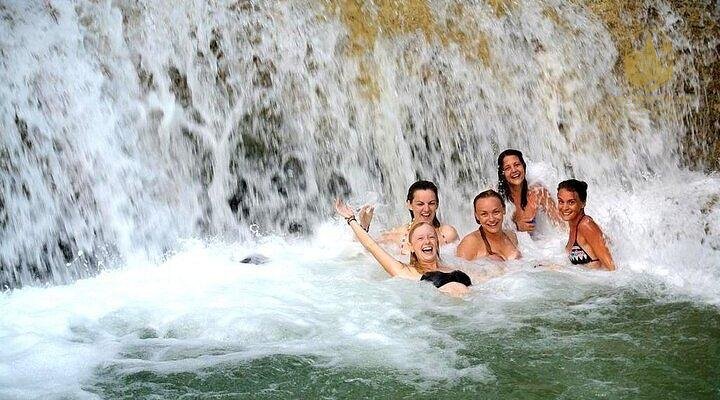
Discover the serene beauty of Hieu village & waterfall. Trek through stunning landscapes, swim in natural pools, and experience authentic local life. Book your adventure with Golden Trail Travel & DMC.
August 29, 2025

Discover the hidden gem of Kho Muong village in Pu Luong. Trek through stunning landscapes, explore a magnificent cave, and experience authentic local life. Book your adventure with Golden Trail Travel & DMC.
August 29, 2025
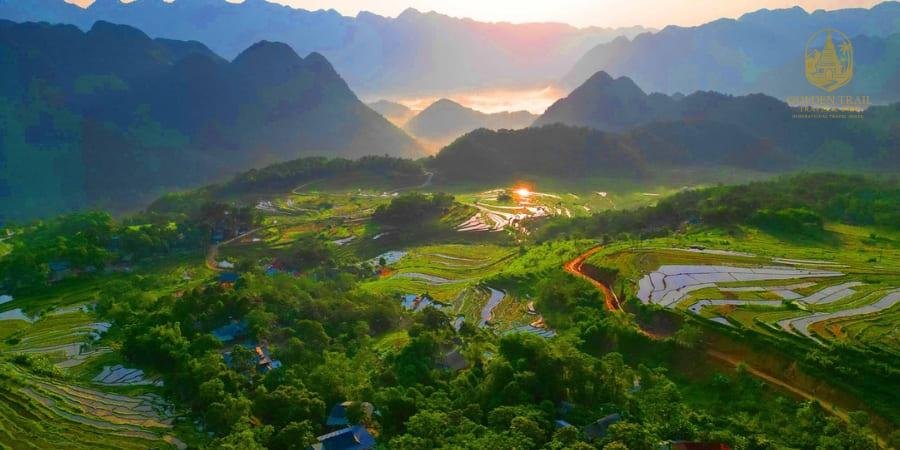
Witness the magic of a Pu Luong sunrise/sunset. Trek to the best viewpoints and experience the breathtaking colors, peace, and natural beauty. Book your Pu Luong tour with Golden Trail Travel & DMC.
August 29, 2025
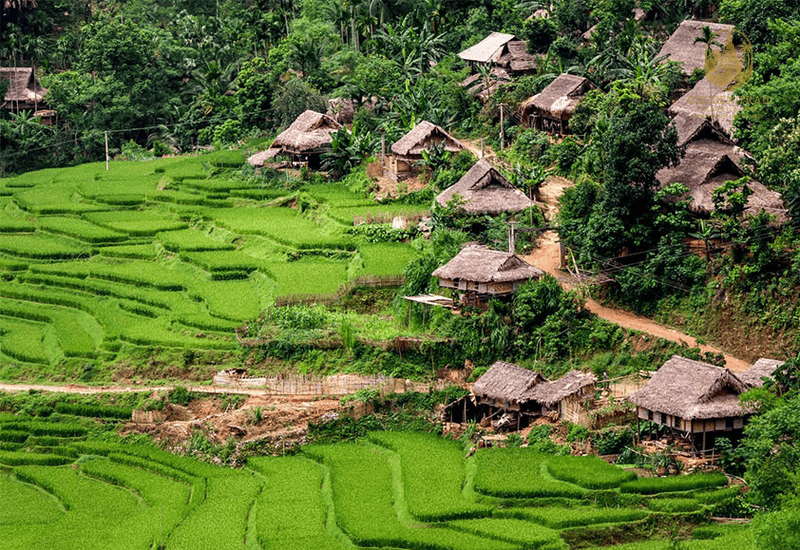
Journey into the soul of Pu Luong. Explore ethnic villages Pu Luong to experience a deep connection with local culture, life, and nature. Book an authentic tour with Golden Trail Travel & DMC.
August 29, 2025
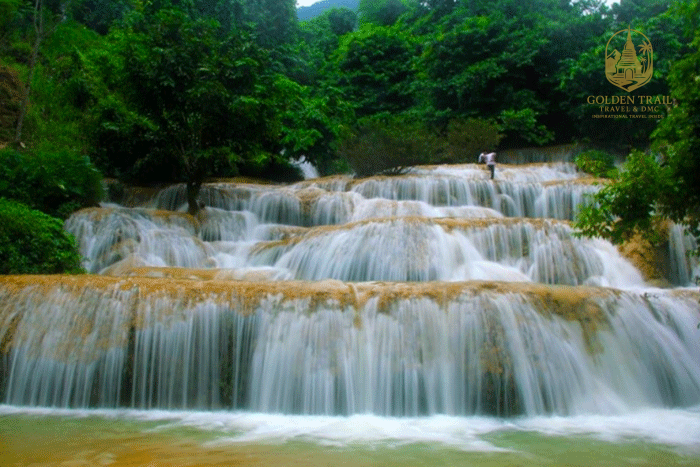
Discover the heart of Pu Luong with a trek to its majestic waterfall. Experience the ultimate journey of peace, conquest, and natural beauty. Book your Pu Luong waterfall tour with Golden Trail Travel & DMC.
August 29, 2025
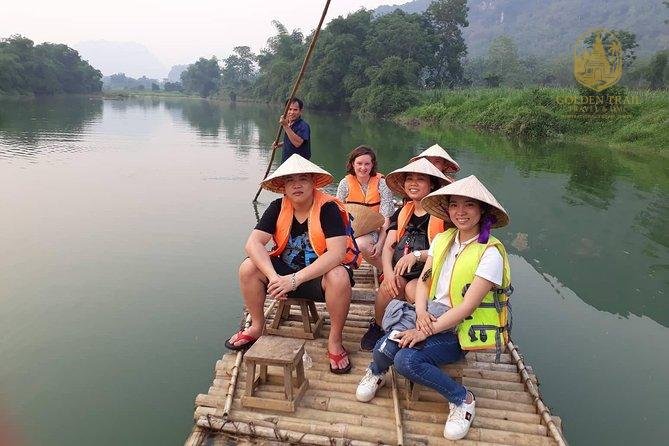
Drift into serenity with bamboo rafting Pu Luong. Discover the tranquility of the Cham Stream, iconic waterwheels, and lush landscapes. Book your unforgettable tour with Golden Trail Travel & DMC.
August 29, 2025